Virginia Hall: World War II Spy From Baltimore
Trekking through the thick winter snow of the Pyrenees mountain range, Virginia Hall struggled with each passing step. After thirteen months in war-torn France with insufficient access to food, heating, and clothes, the once striking thirty-six-year-old lost the glow of youth. Hardened by the death, loss, and destruction, she witnessed at the hands of the Nazis and their collaborators, she was determined to complete the arduous journey through the mountain range that separated occupied France from neutral Spain. Yet, even the most skilled mountaineers in prime summer conditions, at times, held on for dear life.
Unfortunately for Virginia, it was the dead of winter, and to escape the French police, she made the crucial decision to hire a guide to take her across the most dangerous mountain draws. The snow was waist high at points, and the wind relentlessly whipped like it had a vendetta against Virginia herself.
The smuggler, extremely reluctant to take a woman on such a dangerous expedition, did not know Virginia held a secret under her tattered clothes. Fondly referred to as Cuthbert in better times, she now cursed the circumstances which led her to bring him on such a grueling endeavor. Cuthbert was no child or pet, though. He was her prosthetic leg. Yes, Virginia Hall was an amputee from the knee down on her left leg, resulting from a hunting accident in Turkey where she was working as a secretary for the United States Department of State. During this incident, she quite literally shot herself in the leg while trying to climb over a fence. With the rapid onset of gangrene, the doctors had no choice but to remove the infected limb that fateful day in April 1933.
Almost ten years after the tragic accident, her prosthesis made her long for a flesh and blood leg more than she had before. The leather straps which held Cuthbert in place cut into her thigh. Due to the fact she had to hide her disability from the smuggler, Cuthbert remained attached to her at all times when in normal circumstances, she would take him off to give her stump a break. Keeping Cuthbert on meant the difference between arriving at the American consulate a free woman or being arrested by the Vichy authorities and brought to trial for her work in organizing the resistance movement in Lyon.
Virginia took her chances with Cuthbert. Even when her prosthesis sock, which protected her remaining limb from rubbing against the harsh material of the artificial leg, became soaked with her blood, she did not quit. When Cuthbert slipped, and she stared down towards the bottom of the cliff, which was seemingly omnipresent on this mountain pass, Virginia refused to give up. With no aids like snowshoes or even a walking stick, how Virginia Hall made it through to the Spanish side of the draw was nothing short of a miracle.
Her luck woefully ran out when she boarded a train in a small Spanish mountain town. Her weather-beaten appearance and forged documents got her and two fellow travelers arrested and put into a Spanish prison. She faced the very real possibility of being extradited back to France. However, it seems some higher beings knew Virginia’s work was not completed, and she was eventually released into the custody of the American consulate.[1]
At this point, you are probably wondering who Virginia Hall is and what her connection is to D.C. metro history. Virginia (Dindy) Hall was a native of Maryland who split her childhood between an apartment in Baltimore and her family’s estate, known as Box Horn Farm in Parkton, Maryland.[2] She attended the prestigious private school, Roland Park Country, where she was an outgoing and adventurous child and later a young adult.[3]
Virginia’s upbringing was reserved for only those of the likes of upper-class society. Her grandfather, Captain John W. Hall, was president of the First National Bank and the Gas and Electric company.[4] Edwin (Ned) Hall worked as a banker in addition to owning a cinema.[5]
At the age of three, Virginia’s mother (Barbra) and father brought her to Europe for the first time.[6] And thus began her infatuation with the culture, people, and languages of Europe.[7] After bouncing around from varying collegiate institutions in the United States, such as Radcliffe College in Cambridge, Massachusetts, and Barnard College in New York City, Virginia began a long-lasting love affair with France, deciding to move to the city of love to study at École Libre des Sciences Politiques.[8]
For as long as Virginia could remember, she wanted to work for the State Department as a Foreign Service Officer.[9] Due to several circumstances, a major one being the toxic masculinity of the male-dominated State Department, Virginia failed to gain a foothold in the organization on multiple occasions.[10] Despite the sting of several rejections, Virginia’s desire to live abroad won out, and she settled for a secretarial position which brought her to locales such as Warsaw, Poland, and the fateful Izmir, Turkey.[11]
Following the hunting accident which left her legless from the knee down, the State Department sent Virginia back to Maryland to convalesce, accept her new life as an amputee, and learn how to walk with a prosthetic leg.[12] A mere five months after arriving back at Box Horn Farm, claustrophobia set in, and Virginia applied for another secretarial position with the State Department.[13] This time, in Venice, Italy.[14] Despite navigating the old city known for its cobblestone streets and innumerable bridges, all the while lugging around a sixty-pound wooden and aluminum leg, Virginia impressed her superiors at the consulate with her impeccable work.[15]
On September 1, 1939 — the day that Germany Invaded Poland and thus commenced the second Great War of the century — Virginia found herself in Tallinn, Estonia, recently unemployed and disillusioned after another rejection by the State Department to become a Foreign Service Officer, this time for being disabled.[16] Realizing the enormity of the events unfolding before her very own eyes, Virginia knew she had to aid in some capacity against the fascist regimes attempting to take over her beloved Europe.[17] In February of 1940, Virginia went to Paris and volunteered to be a driver for the French Ninth Auxiliary Regiment, serving primarily on the Maginot Line. Knowing her mother would disapprove of her choices, Virginia kept her new position a secret for four months.[18]
When the Germans unexpectedly overran the French forces in June 1940, Virginia was once again out of a job and purpose but a seed was planted as she finished her duties with the ambulance corps in a France under Nazi rule.[19] She wanted to help the French rise up against the Nazis and knew her status as an American would aid in this endeavor. She would have to travel to the last bastion of European freedom, England, to hopefully find a way to carry out her new life’s work.[20]
Some cosmic force wanted Virginia to succeed in her mission. She crossed paths with a supposed travel salesman who, unbeknownst to Virginia, was a covert operative working for the British Special Operation Executive.[21] This chance encounter set Virginia off on a life of secret and intrigue as the British hired her to work as a spy implanted in France to help create resistance networks.[22] Her knowledge of France, mastery of several languages such as French and German, and experience as a medic and ambulance driver made her quite suitable for such a dangerous position. Her cover was that she was an American journalist sent to write stories in Vichy France for the New York Post.[23]
Virginia was undeniably the best operative the SOE had at their disposal. She was sent to Lyon, France, to build up resistance cells and was responsible for coordinating activities such as sabotaging the Vichy government and relaying information back to the British. Virginia remained undetected by the Gestapo and collaborating French police for some thirteen months.[24] She built a loyal following of French civilians in Lyon, most of whom risked their own lives daily to disrupt the Vichy government.[25] Virginia was known amongst her network in Lyon as a trusted leader who would help any of her followers in any way, whether through giving them food or planning and executing dangerous escapes from prisons and concentration camps.[26]
As her involvement in Lyon continued and the German and Vichy governments cracked down on resistance networks, Virginia’s cover was blown by a double agent catholic priest named Abbé Robert Alesch.[27] This betrayal, coupled with the Allied invasion of North Africa and the takeover of the Vichy regime by the Germans, forced Virginia’s hand. She made the difficult decision to leave France and embarked on the dangerous journey through the Pyrenees.
Upon her re-entrance to England, Virginia was convinced her work with the French Resistance was far from complete. With the SOE reluctant to send her back into enemy territory, Virginia switched organizations and started working for the American precursor to the CIA, the Office of Strategic Services (OSS).[28]
Armed with new knowledge such as how to operate a wireless radio and a new look that disguised her as an old French peasant woman, Virginia and another OSS operative took a motorboat across the English Channel, arriving on the beaches of Northern France, just three months before the scheduled Allied cross-channel invasion at Normandy. I [29] Virginia’s mission was simple in words yet so much more complicated in execution. She would have to rebuild French resistance networks in the northern part of France to disrupt the German response to the D-Day invasion and subsequent campaign.[30]
Virginia’s exemplary leadership style, extreme caution, and excellent planning and execution skills quickly gained her another large following of civilians, willing to do anything to expel the Germans from their beautiful country. Come D Day, their goal was to “form companies of maquisards and training and arming them to execute strategic sabotage operations, and, once the time came, hit-and-run attacks on German convoys.”[31] As should be unsurprising to the reader by this point, Virginia performed her duties seemingly effortlessly. Virginia’s efforts by both herself and her network were hailed as the most effective by any Resistance group. They were, in part, attributed to the success of the Normandy campaign.[32] For her heroism and valor service behind enemy lines, Virginia was bestowed such honors as a Member of the Order of the British Empire, the Croix de Guerrero, and the Distinguished Service Cross from the United States government.[33]
(Source: Wikimedia Commons)
Despite being one of the greatest spies of World War II, Virginia Hall’s career greatly suffered due to her gender. Following the end of the war, Virginia joined the ranks of the newly established Central Intelligence Agency.[34] She ended her career in 1966 at the mandatory retirement age of sixty at the highest grade afforded to women at the time, which was equivalent to a lieutenant-colonel in the military.[35] Virginia’s career at the CIA suffered for being a woman, though. Her male colleagues felt threatened by her extensive experience during the war.[36] She was ultimately relegated to desk jobs and away from the on-the-ground covert operations characteristic of the CIA during the Cold War.
Countless biographies and historical treatises have been written on the significant men and their efforts during the Second World War. Walk into any bookstore in the DMV and you will see shelves upon shelves of the story of heroics of men in different historic conflicts. The work of women during World War II has gone largely unnoticed by the general public, until now. Stories of other female spies of World War II, particularly, have come to light in recent years. Authors like Lynne Olson and Liza Mundy, who wrote Madame Fourcade’s Secret War: The Daring Young Woman Who Led France’s Largest Spy Network Against Hitler and Code Girls: The Untold Story of the American Women Code Breakers Who Helped Win World War II, respectively, are changing the way we think about who was instrumental in the success of the Allies. Bravery knows no gender and it is time for the story of all protectors of freedom to receive their due, not least of which is Virginia Hall.
In 1982, Virginia passed away at the age of seventy-seven and was buried in Druid Ridge Cemetery in Pikesville, Maryland.[37] Do not feel bad that you have not heard of Virginia Hall. She would have been perfectly fine if her life story remained unknown, further forgotten by the passage of time. As someone who spent most of her adult life in the real-life version of a James Bond movie, Virginia spoke little about her past. She commented at one point regarding her tight-lipped mentality that “too many of her friends were killed because they talked too much.”[38] As a result, the historical record contains little material from Virginia’s voice. In the last twenty years, though, authors Judith Pearson and Sonia Purnell respectively published two outstanding biographies on Virginia’s life. In order to do so, each writer managed to obtain access to Virginia’s record at the Strategic Operations Executive and CIA. Without such in-depth research in hard-to-access archives, the memory and unbelievable story of Virginia Hall would be lost to the all too real void, which is history. At least now, you will not forget the story of the amputee woman from Baltimore who helped win World War II for the Allies.
Footnotes
- ^ All of the above comes from Sonia Prnell’s A woman of No Importance: the Untold Story of the American Spy who Helped Win World War II (New York, NY: Viking Press, 2019), chapter 7.
- ^ “Maryland Woman is Driving Ambulance for French Army: Miss Virginia Hall Joined Allies Last February without Telling Family of Intentions,” The Baltimore Sun (Baltimore, MD), June 12, 1940.
- ^ “U.S. Embassy in Estonia,” ee.U.S. embassy.gov, U.S. Embassy in Estonia, accessed May 23, 2022. https://ee.usembassy.gov.
- ^ Purnell, Chapter 1, A Woman of No Importance.
- ^ Inif.
- ^ Judith Pearson, The Wolves at the Door : the True Story of America’s Greatest Female Spy (Guilford, CT: Lyons Press, 2005), Prologue.chapter 1
- ^ Purnell, Chapter 1, A Woman of No Importance
- ^ Ibid.
- ^ Pearson, The Wolves at the Door, chapter 1.
- ^ Purnell, Chapter 1,A Woman of No Importance.
- ^ Pearson, The Wolves at the Door, chapter 3.
- ^ Purnell, Chapter 1, A Woman of No Importance.
- ^ Pearson, The Wolves at the Door, chapter 3.
- ^ Purnell, Chapter 1,A Woman of No Importance.
- ^ Ibid.
- ^ Pearson, The Wolves at the Door, chapter 3.
- ^ Purnell, Chapter 1, A Woman of No Importance.
- ^ “Maryland Woman is Driving Ambulance for French Army,” The Baltimore Sun.
- ^ Ibid.
- ^ Ibid.
- ^ Purnell, Chapter 1,A Woman of No Importance.
- ^ Pearson, The Wolves at the Door, chapter 7.
- ^ Ibid.
- ^ Purnell, Chapter 3, A Woman of No Importance.
- ^ Pearson, The Wolves at the Door, chapter 9.
- ^ Purnell, Chapter 5, A Woman of No Importance
- ^ Pearson, The Wolves at the Door, chapter 12.
- ^ Purnell, Chapter 8, A Woman of No Importance.
- ^ Pearson, The Wolves at the Door, prologue.
- ^ Purnell, Chapter 9, A Woman of No Importance.
- ^ Ibid.
- ^ Pearson, The Wolves at the Door, chapter 14 and 18.
- ^ Purnell, Chapter 11, A Woman of No Importance.
- ^ Purnell, Chapter 12, A Woman of No Importance.
- ^ Ibid.
- ^ Ibid.
- ^ “Virginia Goillot, of French Resistance, Dies,” The Baltimore Sun (Baltimore, MD), July 13, 1982.
- ^ Ibid.


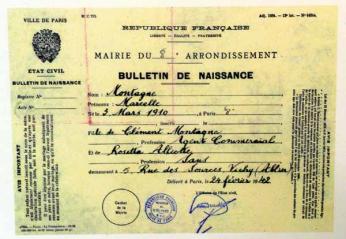
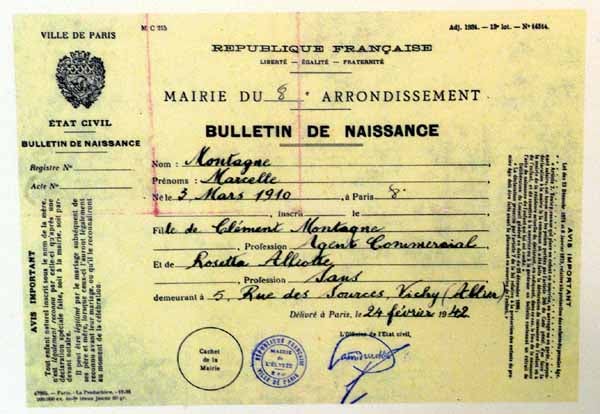
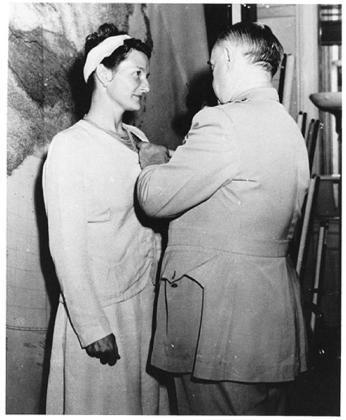
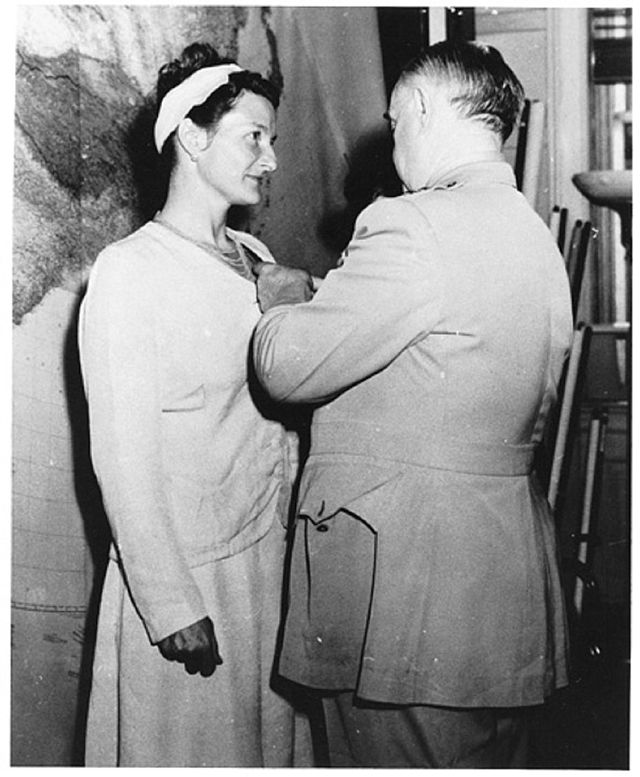
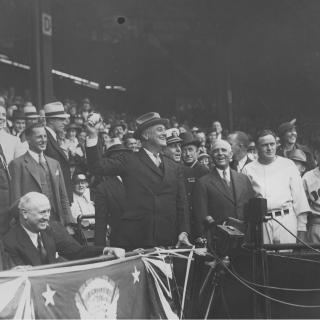
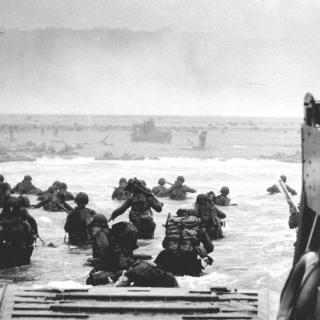
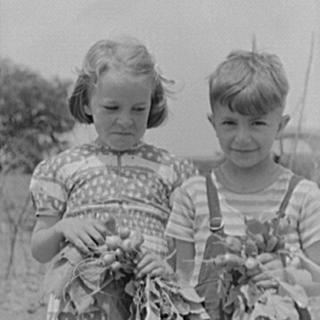
![Sketch of the mythical fuan by Pearson Scott Foresman. [Source: Wikipedia]](/sites/default/files/styles/crop_320x320/public/2023-10/Goatman_Wikipedia_Faun_2_%28PSF%29.png?h=64a074ff&itok=C9Qh-PE1)












